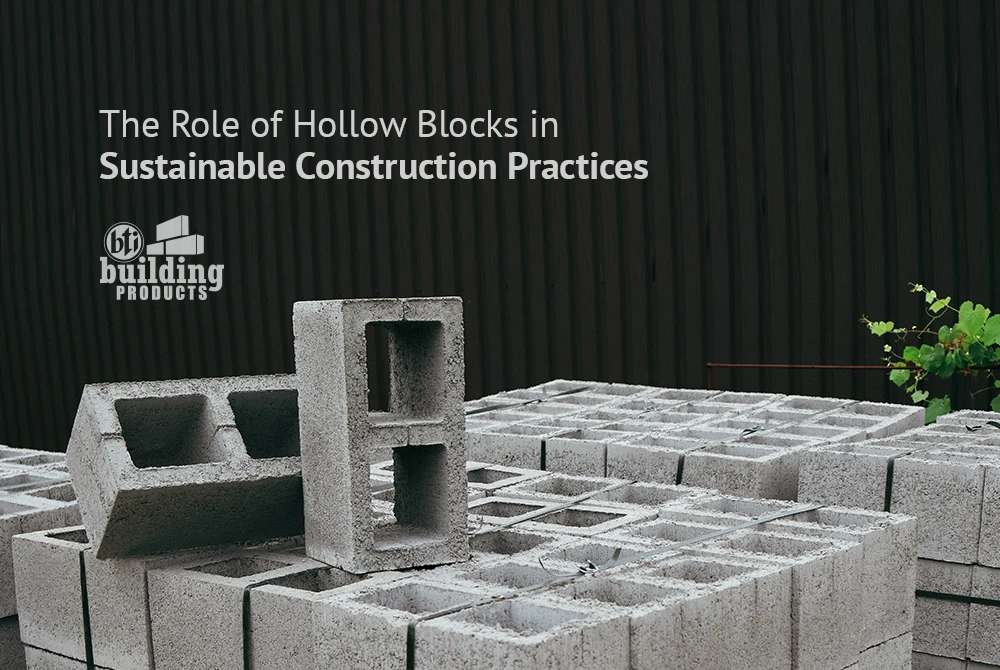
The Role of Hollow Blocks in Sustainable Construction Practices
Sustainable construction is increasingly becoming a priority as we confront the environmental challenges of our time. Builders and developers are constantly seeking innovative materials and techniques that reduce environmental impact while maintaining efficiency and durability.
One such material that has gained prominence in this movement is the humble hollow block. These blocks, traditionally used in construction, are now being appreciated for their potential to create eco-friendly structures. This blog explores the role hollow blocks play in sustainable construction practices and why they are becoming a favored choice in modern building projects.
What Are Hollow Blocks?
Hollow blocks are rectangular blocks typically made of cement, sand, and aggregate. They have hollow cavities that occupy a significant portion of their volume. These cavities reduce the amount of material needed for production and make the blocks lighter than solid blocks, allowing for easier handling and installation. Their use is widespread in the construction of walls, partitions, and foundations.
Key Benefits of Hollow Blocks in Sustainable Construction
- Reduction of Material Use One of the most immediate advantages of hollow blocks is that they require less raw material for production compared to solid blocks.
The hollow sections inside the blocks reduce the need for cement, sand, and aggregate. This not only cuts down on material consumption but also lessens the energy and resources used in the manufacturing process.
- Improved Thermal Insulation The hollow spaces within these blocks act as insulators, trapping air and slowing the transfer of heat. This natural thermal resistance reduces the energy required to heat or cool buildings.
Consequently, structures built with hollow blocks can experience lower energy costs for temperature regulation, contributing to a more sustainable and energy-efficient operation over their lifetime.
- Energy Efficiency in Manufacturing Hollow blocks are typically manufactured using a mixture of locally available materials, which minimizes transportation-related energy costs.
Additionally, the reduced volume of material in each block means less energy is used in production, particularly in terms of cement, which is a highly energy-intensive material.
- Strength and Durability Hollow blocks, despite being lighter, offer impressive strength and durability. Their structural integrity allows them to be used in load-bearing walls, providing a sustainable solution that does not compromise on stability.
This durability extends the lifespan of the structure, reducing the need for repairs or replacements and lowering the long-term environmental impact of construction.
- Waste Reduction The manufacturing process of hollow blocks generates less waste compared to traditional methods of brickmaking.
Additionally, their standard size and shape reduce on-site wastage, as they fit more efficiently in construction layouts. Leftover blocks can be repurposed, further minimizing construction waste.
- Water Conservation Traditional bricks often require a significant amount of water for curing. However, some hollow blocks, such as those made with fly ash, can be cured without water or with minimal water usage, contributing to water conservation efforts in the construction process.
- Environmentally Friendly Alternatives Hollow blocks can be made from a variety of eco-friendly materials. For instance, fly ash hollow blocks use a byproduct of coal combustion, reducing the need for cement and promoting the recycling of industrial waste.
Using such alternative materials further reduces the environmental impact of construction while enhancing the sustainability of the entire process.
The Versatility of Hollow Blocks in Green Building
Beyond their material efficiency and durability, hollow blocks offer architectural versatility. They can be used in various types of construction, from low-rise residential buildings to large-scale commercial projects.
Their ability to integrate with other sustainable building practices, such as rainwater harvesting and passive cooling systems, makes them an excellent choice for developers focused on eco-friendly designs.
In addition, hollow blocks provide excellent insulation from sound, creating healthier, more comfortable living environments. Their contribution to acoustics, combined with their energy-saving properties, makes them a well-rounded option for green construction projects.
Conclusion
The role of hollow blocks in sustainable construction practices is undeniable. From reducing material consumption and waste to enhancing thermal efficiency and durability, these blocks offer a practical, eco-friendly alternative for builders looking to minimize their environmental footprint. As sustainable building practices continue to evolve, hollow blocks are likely to remain a staple material in the quest for greener, more efficient, and more resilient structures.
Whether you’re constructing a home or a large commercial space, incorporating hollow blocks can help you achieve your sustainability goals without compromising on strength or design flexibility.




